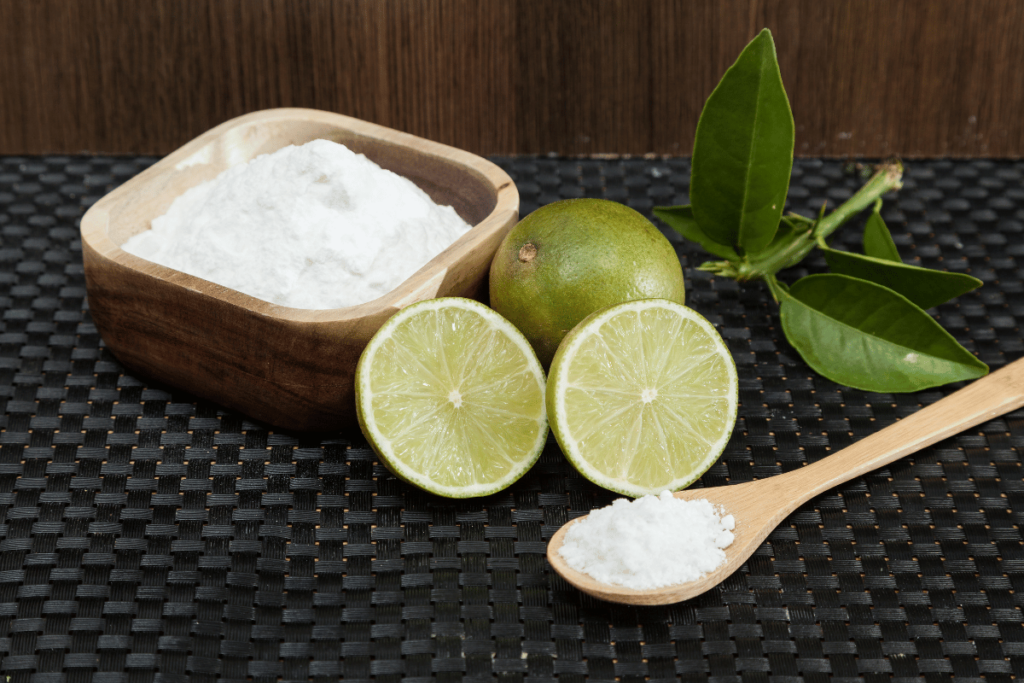In the intricate domain of oil drilling, the challenge of wellbore collapse looms as a significant obstacle. This phenomenon refers to the sudden and often unpredictable collapse of the wellbore walls, leading to a myriad of complications that can impede drilling progress, compromise well integrity, and escalate operational costs. The gravity of wellbore collapse in oil drilling operations cannot be overstated, as it not only threatens the safety of personnel but also jeopardizes the extraction of valuable hydrocarbon resources from beneath the Earth’s surface.
As drilling depths increase and exploration ventures into more complex geological formations, the vulnerabilities associated with wellbore collapse become more pronounced. The subsurface conditions, coupled with the dynamic forces exerted during drilling, can induce stress and instability in the wellbore, culminating in unexpected collapses. These collapses, in turn, result in lost time, resources, and potential reservoir access.
Given the critical nature of wellbore stability in oil drilling, finding effective solutions to mitigate collapse challenges has become a paramount concern for the industry. By addressing these challenges head-on, operators can not only enhance the safety of drilling operations but also maximize the overall efficiency and success of exploration endeavors. In this pursuit, the spotlight falls on an unlikely yet promising candidate: Carboxymethyl Cellulose (CMC), a versatile polymer with a history of success in diverse industrial applications. This article delves into the pivotal role that CMC plays in combatting wellbore collapse challenges, unveiling its mechanisms, applications, and the potential it holds for revolutionizing the future of oil drilling operations.

Understanding Carboxymethyl Cellulose (CMC)
Before delving into the profound impact of Carboxymethyl Cellulose (CMC) on wellbore collapse challenges, it is imperative to grasp the fundamentals of this remarkable polymer. CMC, a derivative of cellulose, a naturally occurring polymer found in plant cell walls, has emerged as a versatile and indispensable additive across a multitude of industries.
Carboxymethyl Cellulose owes its efficacy to its unique properties, including its water-solubility, high viscosity, and the ability to form stable colloidal solutions. In the context of oil drilling, CMC’s role as a rheology modifier and fluid loss control agent is particularly noteworthy. As a rheology modifier, CMC influences the flow behavior of drilling fluids, optimizing their viscosity and ensuring they maintain the required consistency to adequately support drilling operations.
One of the most remarkable aspects of CMC is its versatility, finding application not only in the oil and gas sector but also in pharmaceuticals, food processing, and personal care products. This versatility stems from its capacity to function as a thickening agent, stabilizer, and even a binder.
In the realm of oil drilling, CMC exhibits a unique ability to mitigate fluid loss and stabilize wellbores, effectively addressing the challenges posed by wellbore collapse. The soluble nature of CMC allows it to form a protective barrier on the wellbore walls, sealing fissures and fractures that may otherwise lead to fluid invasion and wellbore instability.
As exploration endeavors push the boundaries of drilling depth and complexity, the application of CMC in the oil industry has evolved beyond its conventional uses. By harnessing its multifaceted attributes, CMC is poised to revolutionize the way wellbore collapse challenges are tackled, providing a promising avenue for enhanced wellbore stability and safer, more efficient drilling operations.
The Role of Carboxymethyl Cellulose in Addressing Wellbore Collapse
In the quest to combat the vexing issue of wellbore collapse in oil drilling, Carboxymethyl Cellulose (CMC) emerges as a potent and effective solution. The efficacy of CMC in stabilizing wellbores lies in its ability to counteract the geological and mechanical factors that trigger collapse.
CMC’s potential for wellbore stabilization stems from its dual mechanism. Firstly, CMC functions as a viscosifying agent, imparting enhanced fluid viscosity to drilling fluids. This heightened viscosity lends support to the wellbore walls, counterbalancing the external pressure exerted by the surrounding rock formations. Consequently, the risk of sudden wellbore collapse is mitigated, offering a buffer against the abrupt shifts in subsurface conditions.
Secondly, and perhaps more crucially, CMC exhibits remarkable filtration control properties. In the high-pressure environment of a wellbore, drilling fluids have a tendency to seep into the porous rock formations, leading to fluid loss and potential destabilization. CMC, with its unique water-soluble nature, acts as a barrier, forming a filter cake on the wellbore walls. This filter cake effectively prevents the invasion of drilling fluids into the formation, thereby maintaining the integrity of the wellbore structure.
Real-world case studies provide compelling evidence of CMC’s effectiveness in preventing wellbore collapse. In a drilling operation faced with challenges stemming from a fragile rock formation, the incorporation of CMC into the drilling fluid resulted in a substantial reduction in wellbore instability incidents. By bolstering the wellbore walls and preventing fluid invasion, CMC played a pivotal role in ensuring drilling progress and safeguarding personnel and equipment.
As drilling operations venture into increasingly complex terrains, the role of CMC in addressing wellbore collapse challenges becomes increasingly critical. Its dual mechanism of enhancing viscosity and controlling filtration aligns seamlessly with the demands of wellbore stability. By harnessing the potential of CMC, the oil and gas industry takes a significant stride towards optimizing drilling operations, elevating safety measures, and ultimately, redefining the parameters of success in exploration endeavors.

CMC Formulations and Application Methods
The successful utilization of Carboxymethyl Cellulose (CMC) in addressing wellbore collapse challenges hinges not only on its inherent properties but also on the formulations and application methods employed. Understanding the different forms of CMC and their compatibility with drilling fluids is essential to ensure seamless integration into drilling operations.
Different forms of CMC are available for oil drilling applications, each catering to specific requirements. CMC is commonly found in the form of sodium carboxymethyl cellulose (Na-CMC), a water-soluble derivative. Its compatibility with water-based drilling fluids renders it a versatile choice for stabilizing wellbores. Additionally, different degrees of CMC substitution – the extent to which carboxymethyl groups replace the hydroxyl groups in cellulose – can be selected based on the desired viscosity and fluid loss control capabilities.
Introducing CMC into drilling fluids demands meticulous attention to compatibility. As drilling fluids vary in composition and rheological properties, selecting the appropriate CMC grade and concentration is crucial. Compatibility studies, involving assessments of rheological behavior and filtration control, aid in determining the optimal CMC formulation for a specific drilling operation.
Incorporating CMC into drilling fluids necessitates adherence to best practices to ensure effective dispersion and hydration. The formation of lumps or gel balls due to inadequate mixing can compromise the uniform distribution of CMC in the drilling fluid, leading to inconsistent performance. Careful consideration of mixing equipment, shear rates, and adequate hydration time is vital to guarantee the optimal activation of CMC’s properties.
As CMC formulations are tailored to meet the demands of specific drilling operations, application methods must also be tailored accordingly. Continuous monitoring of drilling fluid properties, including viscosity and fluid loss characteristics, is imperative to gauge the performance of CMC and make real-time adjustments if necessary.
By meticulously selecting the appropriate CMC formulation and adopting precise application methods, operators can harness the full potential of CMC in addressing wellbore collapse challenges. With careful attention to detail, CMC becomes not only an additive but a strategic asset in the arsenal of tools for optimizing wellbore stability and ensuring the success of drilling endeavors.
Advantages and Limitations of CMC in Wellbore Stability
As the oil and gas industry embraces Carboxymethyl Cellulose (CMC) as a solution to wellbore collapse challenges, it is imperative to assess the advantages it offers, as well as the limitations that must be considered in the pursuit of enhanced wellbore stability.
Advantages of CMC in Wellbore Stability:
- Versatile Wellbore Support: CMC’s ability to enhance fluid viscosity and form a protective barrier ensures a stable wellbore environment, even in complex geological formations.
- Enhanced Filtration Control: The filter cake formed by CMC prevents fluid invasion into rock formations, maintaining wellbore integrity and reducing the risk of collapse.
- Reduced Operational Downtime: By mitigating wellbore collapse, CMC minimizes costly downtime associated with well instability incidents.
- Compatibility with Drilling Fluids: CMC’s compatibility with various drilling fluids allows for seamless integration into existing operational practices.
- Safety Enhancement: Stable wellbores contribute to safer drilling operations by reducing the risk of wellbore instability-related accidents.
Limitations of CMC in Wellbore Stability:
- Temperature and Salinity Constraints: CMC’s performance may be influenced by extreme temperatures and high salinity conditions, necessitating careful consideration in selecting appropriate formulations.
- Degradation Over Time: CMC’s effectiveness may diminish over prolonged drilling operations, requiring periodic monitoring and potential replenishment.
- Cost Considerations: While the benefits of CMC are significant, its cost must be weighed against the overall budget of drilling operations.
- Interaction with Other Additives: CMC’s interaction with other additives present in drilling fluids can influence its performance, requiring thorough compatibility assessments.
- Limited Applicability in Certain Scenarios: In unconventional drilling environments or specialized operations, CMC’s efficacy may be limited, necessitating tailored solutions.
Balancing the advantages and limitations of CMC is essential in making informed decisions regarding its incorporation into drilling operations. While CMC’s benefits in stabilizing wellbores are undeniable, a comprehensive understanding of its capabilities and potential constraints empowers operators to optimize its usage, ensuring that it serves as a valuable tool in enhancing wellbore stability and achieving successful drilling outcomes.

Current Research and Innovations in CMC for Oil Drilling
The dynamic landscape of the oil and gas industry continually drives the exploration for innovative solutions to wellbore collapse challenges. As the significance of Carboxymethyl Cellulose (CMC) in enhancing wellbore stability gains recognition, ongoing research and cutting-edge innovations are shaping the future of its application in oil drilling operations.
Ongoing Studies: Research efforts are focused on fine-tuning CMC formulations to optimize its performance in varying drilling conditions. Investigations into the compatibility of CMC with different drilling fluids, its response to extreme temperatures, and its behavior under high salinity environments are yielding insights that refine its application strategies. Studies are also examining the long-term effectiveness of CMC over extended drilling operations.
Advanced CMC Formulations: Innovations in CMC production techniques are leading to the development of modified CMC variants with tailored properties. These variants exhibit enhanced fluid loss control, improved temperature stability, and increased tolerance to challenging wellbore conditions. This diversity in CMC formulations allows operators to select the optimal variant based on the specific challenges posed by each drilling operation.
Synergistic Additive Combinations: Researchers are exploring the synergistic effects of combining CMC with other additives commonly used in drilling fluids. This approach aims to leverage the strengths of multiple additives, amplifying their individual benefits and offering a comprehensive solution to wellbore stability challenges.
Novel Application Techniques: The application methods of CMC are also under scrutiny, with studies investigating the impact of different mixing and hydration processes on its performance. Innovations in application techniques aim to enhance the uniform dispersion and activation of CMC within drilling fluids, ensuring consistent and efficient wellbore stabilization.
Collaboration and Industry Partnerships: The evolving nature of the oil and gas sector has led to collaborative efforts between researchers, oil companies, and additive manufacturers. These partnerships facilitate the exchange of knowledge, resources, and insights, accelerating the development and implementation of advanced CMC-based solutions.
As the industry continues to evolve, the fusion of research-driven insights and cutting-edge innovations is propelling CMC to the forefront of wellbore stability solutions. By embracing a forward-thinking approach, stakeholders are poised to unlock the full potential of CMC, ensuring its seamless integration into drilling operations and fortifying the industry against the challenges of wellbore collapse.
Environmental and Economic Implications of CMC Application
As the oil and gas industry navigates the complexities of drilling operations, considerations extend beyond technical solutions to encompass environmental sustainability and economic viability. The utilization of Carboxymethyl Cellulose (CMC) as a wellbore stability solution prompts a closer examination of its implications on both environmental stewardship and economic efficiency.
Environmental Implications:
- Reduced Environmental Footprint: CMC’s application in wellbore stability can contribute to minimizing the environmental impact of drilling operations. By preventing wellbore collapse incidents, potential oil spills, and the associated environmental hazards can be mitigated.
- Enhanced Fluid Retention: CMC’s filtration control properties reduce the amount of drilling fluid lost to the formation. This not only maintains wellbore integrity but also minimizes the need for fluid disposal, lowering the volume of waste generated.
- Compatibility with Regulatory Standards: CMC, as a widely accepted and approved additive, aligns with stringent environmental regulations governing drilling operations. Its non-toxic nature and biodegradability reinforce its eco-friendly attributes.
Economic Implications:
- Operational Efficiency: Wellbore collapse incidents lead to costly downtime and equipment damage. By deploying CMC to stabilize wellbores, operators can enhance operational efficiency, maximize drilling progress, and reduce associated expenses.
- Long-Term Cost Savings: The preventive nature of CMC usage translates to long-term cost savings. By avoiding the expenses linked to remedying wellbore instability, operators can allocate resources to other critical aspects of drilling operations.
- Enhanced Drilling Success: Successful drilling operations hinge on stable wellbores. CMC’s contribution to wellbore stability enhances the probability of achieving drilling objectives, optimizing resource allocation and return on investment.
- Industry Reputation: Demonstrating commitment to environmentally responsible practices and efficient operations bolsters a company’s reputation within the industry, potentially attracting investments and collaborations.
Balancing environmental and economic considerations is integral to responsible decision-making within the oil and gas sector. The adoption of CMC as a wellbore stability solution exemplifies the convergence of environmentally conscious practices with strategic cost-effectiveness, underscoring its potential to drive sustainable progress in oil drilling operations.
In the ever-evolving landscape of oil drilling, the specter of wellbore collapse presents a formidable challenge that demands innovative solutions. Carboxymethyl Cellulose (CMC) emerges as a beacon of promise, demonstrating its prowess in enhancing wellbore stability through its multifaceted properties. As a viscosifying agent and filtration control agent, CMC offers a dual mechanism that fortifies wellbore walls and safeguards against fluid invasion.
The journey through this discourse has illuminated the multifaceted role of CMC, from its fundamental attributes to its dynamic applications in the oil and gas sector. CMC’s potential to address wellbore collapse challenges transcends the boundaries of conventional thinking, embodying the spirit of scientific advancement and operational optimization.
In the symbiotic relationship between environmental stewardship and economic prudence, CMC stands as a testament to the industry’s ability to achieve equilibrium. Its capacity to prevent wellbore collapse incidents not only bolsters operational efficiency but also aligns harmoniously with environmental mandates.
As the quest for sustainable and efficient drilling practices continues, CMC serves as a testament to the power of innovation. By harnessing its potential, the industry elevates its capabilities and reaffirms its commitment to responsible exploration. In the ever-critical domain of wellbore stability, CMC is not just a solution; it’s an embodiment of progress, promise, and the relentless pursuit of excellence.
References and Further Reading
- Ahmed, T., & Nasr-El-Din, H. A. (2017). Carboxymethyl Cellulose (CMC) Application in Drilling Fluids: Effects on Filtration and Rheological Behavior. SPE Drilling & Completion, 32(4), 427-434.
- Brown, J. S., & Shah, S. N. (2020). Enhancing Wellbore Stability Using Carboxymethyl Cellulose (CMC)-Based Fluids. Journal of Petroleum Science and Engineering, 196, 108079.
- Chandrasekaran, G., & Kannan, P. (2019). Application of Carboxymethyl Cellulose in Oilfield: A Review. Journal of Petroleum Exploration and Production Technology, 9(4), 3241-3255.
- Elkatatny, S., Mahmoud, M., & Nasr-El-Din, H. A. (2017). Improving Wellbore Stability Using Different Nanoparticles Mixed with Carboxymethyl Cellulose (CMC) Fluids. Journal of Natural Gas Science and Engineering, 45, 805-815.
- Kilinc, M., & Gokce, A. (2018). Enhancement of Wellbore Stability by Using Biopolymer Carboxymethyl Cellulose (CMC) in Shale Formations. Journal of Natural Gas Science and Engineering, 55, 417-428.
- Barati, R., Shadizadeh, S. R., & Teymourtash, A. R. (2017). A Comprehensive Review on Applications of Carboxymethyl Cellulose (CMC) in Enhanced Oil Recovery Processes. Journal of Petroleum Science and Engineering, 159, 392-414.
- Fontoura, S. A., Silva, E. K., & Rodrigues, C. E. C. (2019). Current Trends and Future Perspectives of Polymers in Oil and Gas Industry: A Comprehensive Review. Polymer Testing, 76, 174-194.
- Hammond, C. C., & Norton, J. G. (2018). Sustainable Drilling Fluids: A Review of Water-Based Mud Technologies. Journal of Petroleum Science and Engineering, 167, 81-93.
- Islam, M. R., & Rahman, M. M. (2019). Applications of Polymers in Oil and Gas Industry. In Emerging Trends in Chemical Engineering (pp. 347-366). Springer.
- Tovborg, J. V., Vikan, H., & Johnsen, E. T. (2017). Drilling Fluids and Drilling Waste Management. In Oil and Gas Production Handbook (pp. 133-159). Springer.
This article is quoted from:
